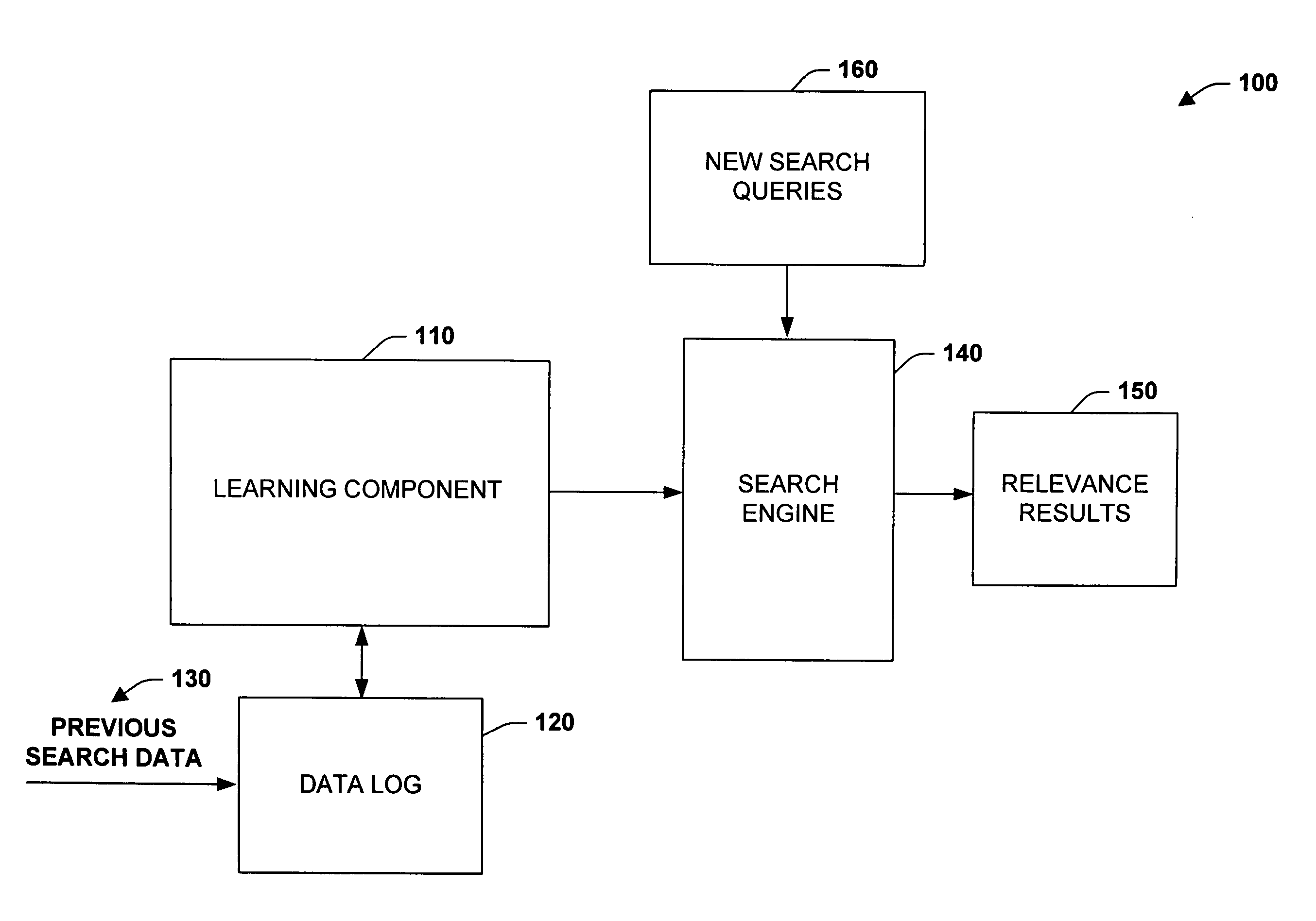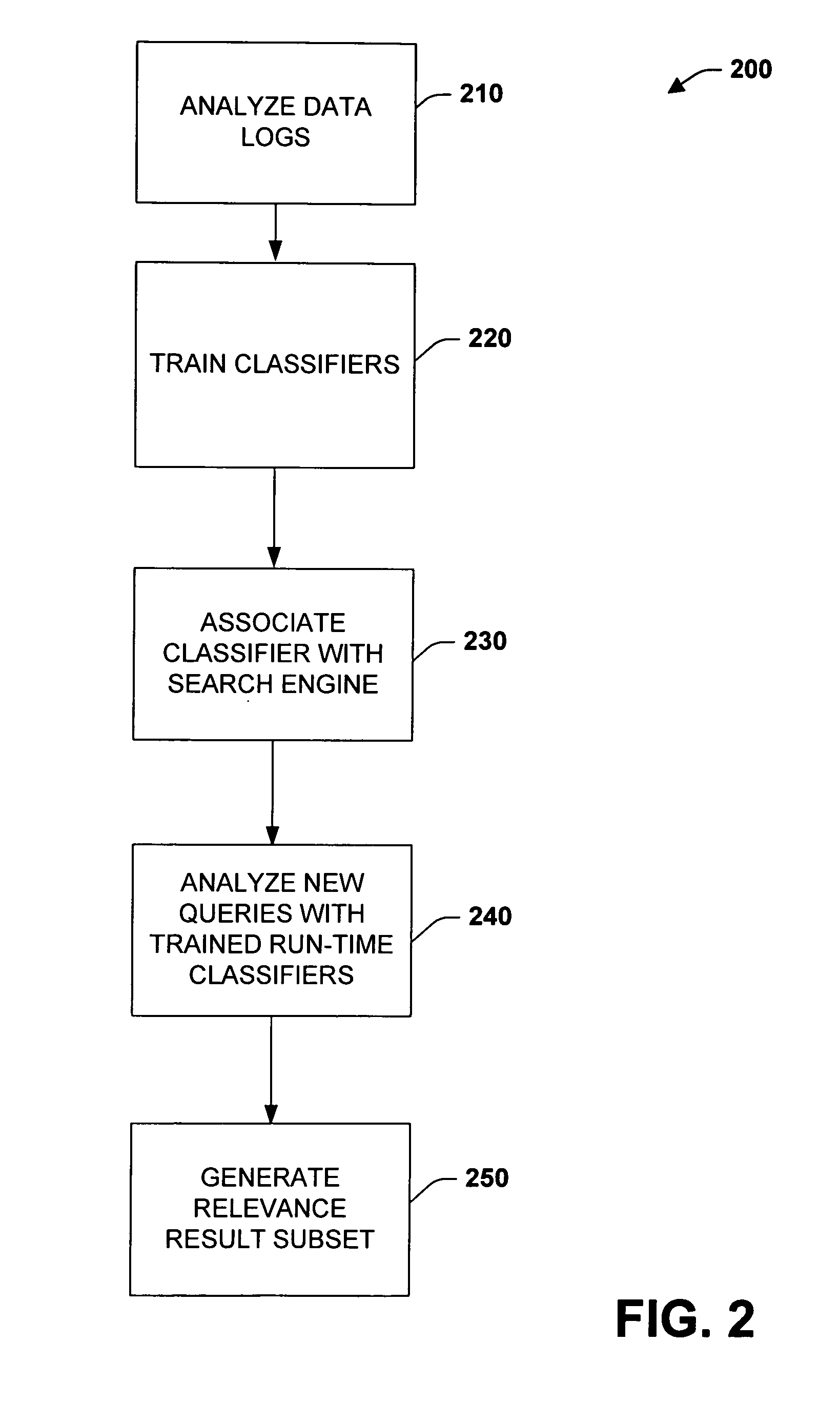Data mining techniques for improving search engine relevance
a search engine relevance and data mining technology, applied in the field of computer systems, can solve the problems of not being able to find what users want, requiring manual focusing or narrowing of search terms, and saving users a lot of time in narrowing terms, so as to facilitate efficient searching, retrieval and analysis of information, and improve information search processes. , the effect of reducing the amount of time for users to loca
- Summary
- Abstract
- Description
- Claims
- Application Information
AI Technical Summary
Benefits of technology
Problems solved by technology
Method used
Image
Examples
Embodiment Construction
[0021] The subject invention relates to systems and methods that automatically learn data relevance from past search activities and apply such learning to facilitate future search activities. In one aspect, an automated information retrieval system is provided. The system includes a learning component that analyzes stored information retrieval data to determine relevance patterns from past user information search activities. A search component (e.g., search engine) employs the learning component to determine a subset of current search results based at least in part on the relevance patterns. Numerous variables can be processed in accordance with the learning component including search failure data, relevance data, implicit data, system data, application data, hardware data, contextual data such as time-specific information, and so forth in order to efficiently generate focused, prioritized, and relevant search results.
[0022] As used in this application, the terms “component,”“syste...
PUM
 Login to View More
Login to View More Abstract
Description
Claims
Application Information
 Login to View More
Login to View More - R&D
- Intellectual Property
- Life Sciences
- Materials
- Tech Scout
- Unparalleled Data Quality
- Higher Quality Content
- 60% Fewer Hallucinations
Browse by: Latest US Patents, China's latest patents, Technical Efficacy Thesaurus, Application Domain, Technology Topic, Popular Technical Reports.
© 2025 PatSnap. All rights reserved.Legal|Privacy policy|Modern Slavery Act Transparency Statement|Sitemap|About US| Contact US: help@patsnap.com



